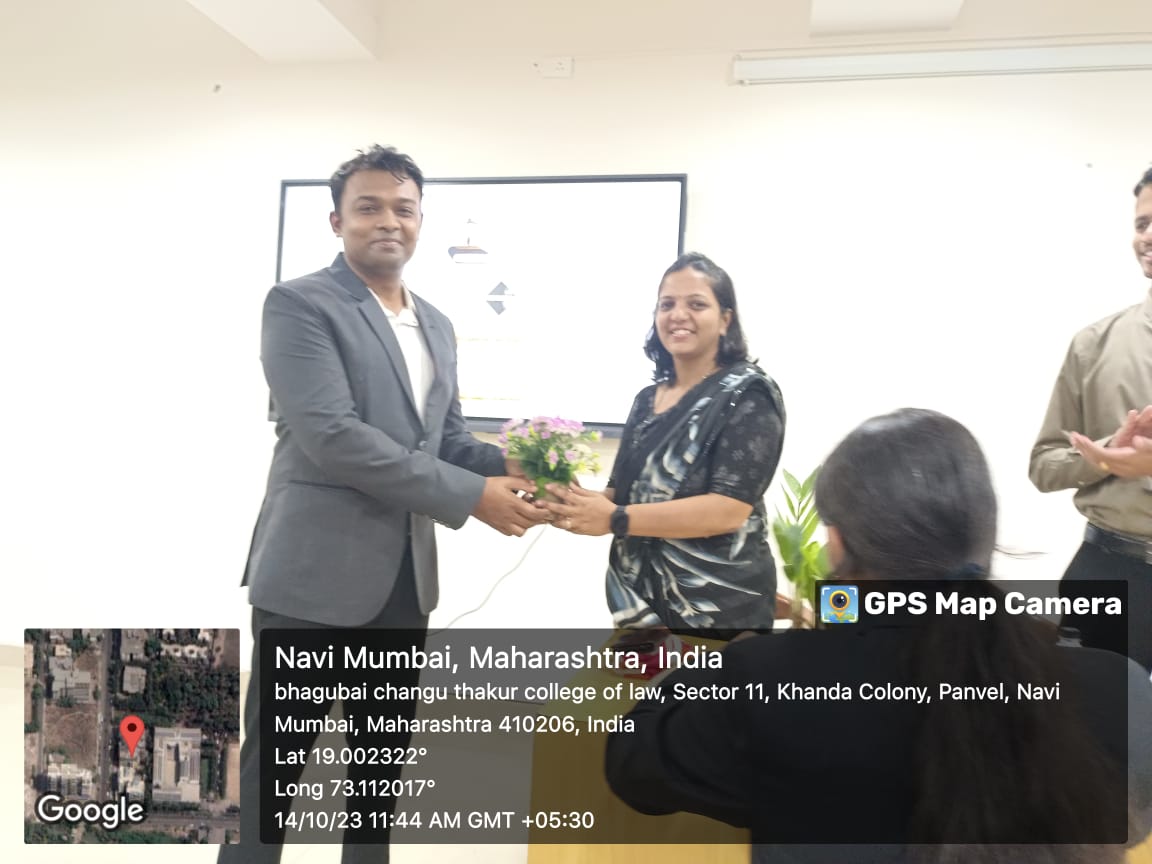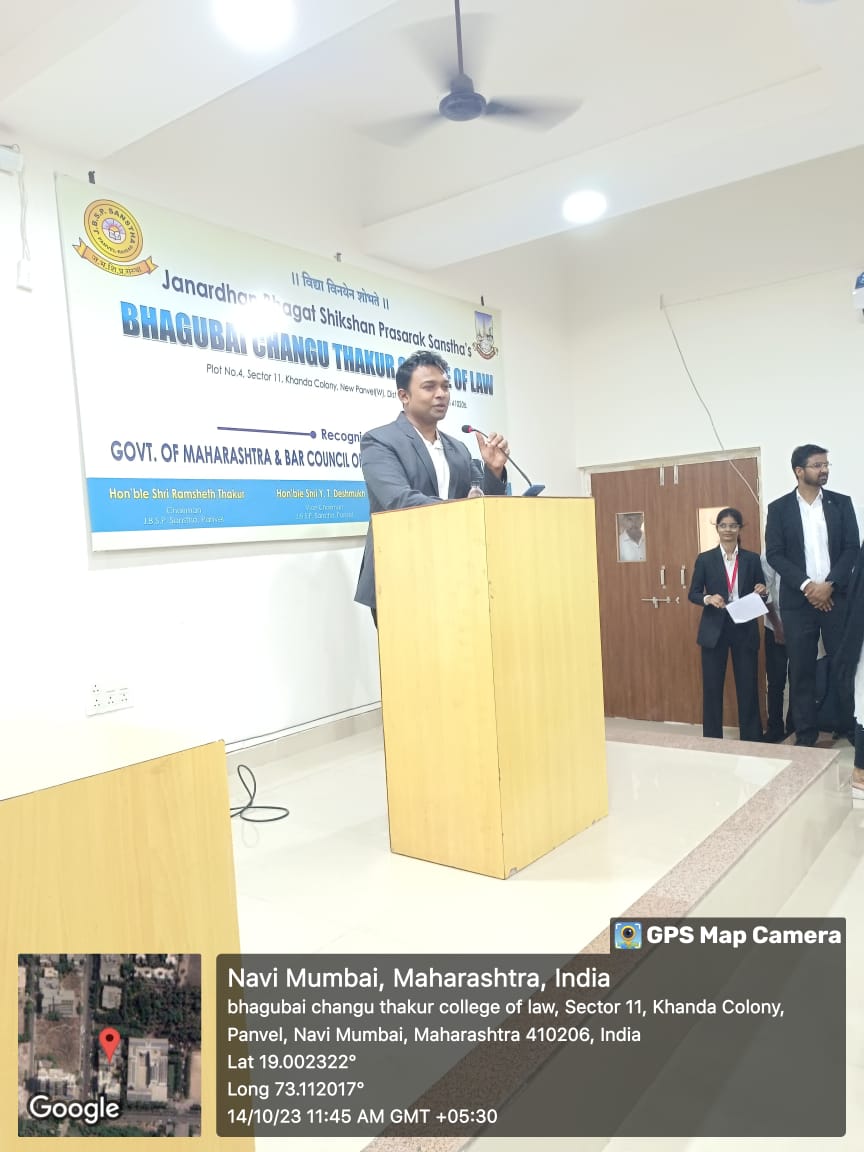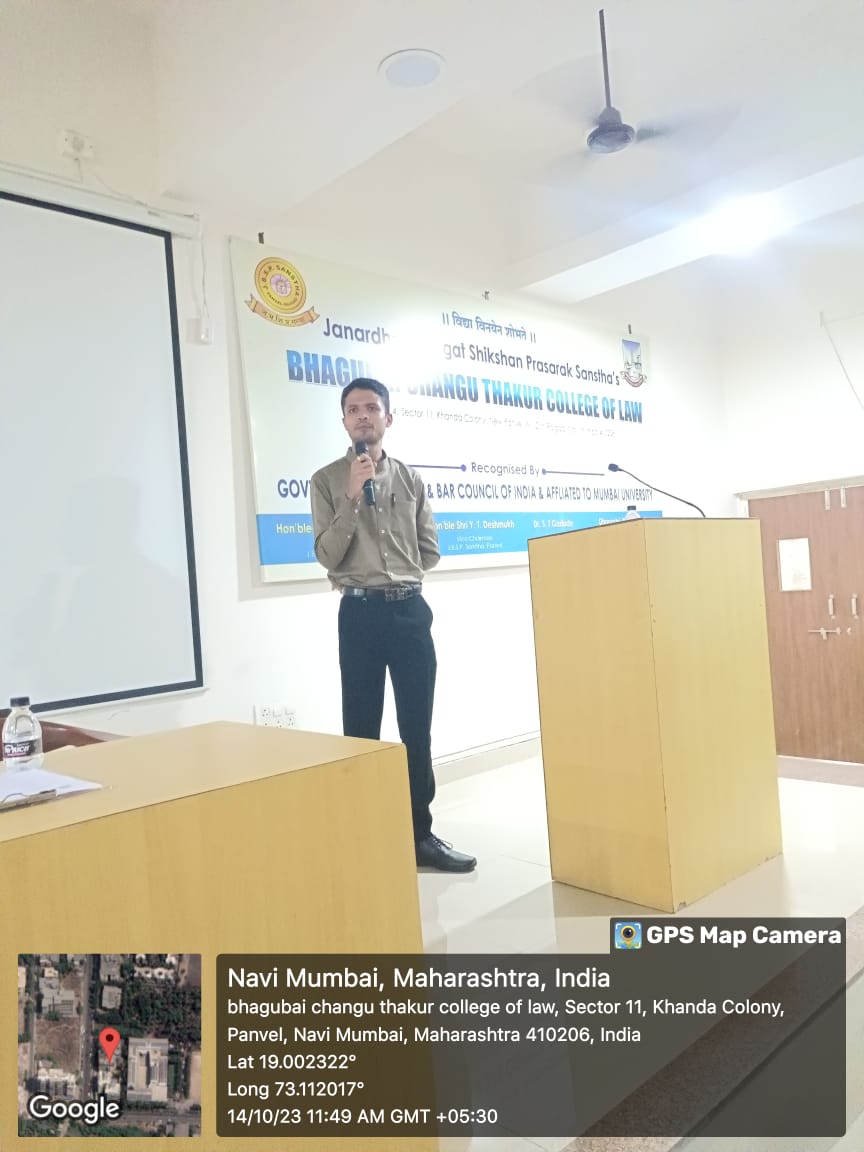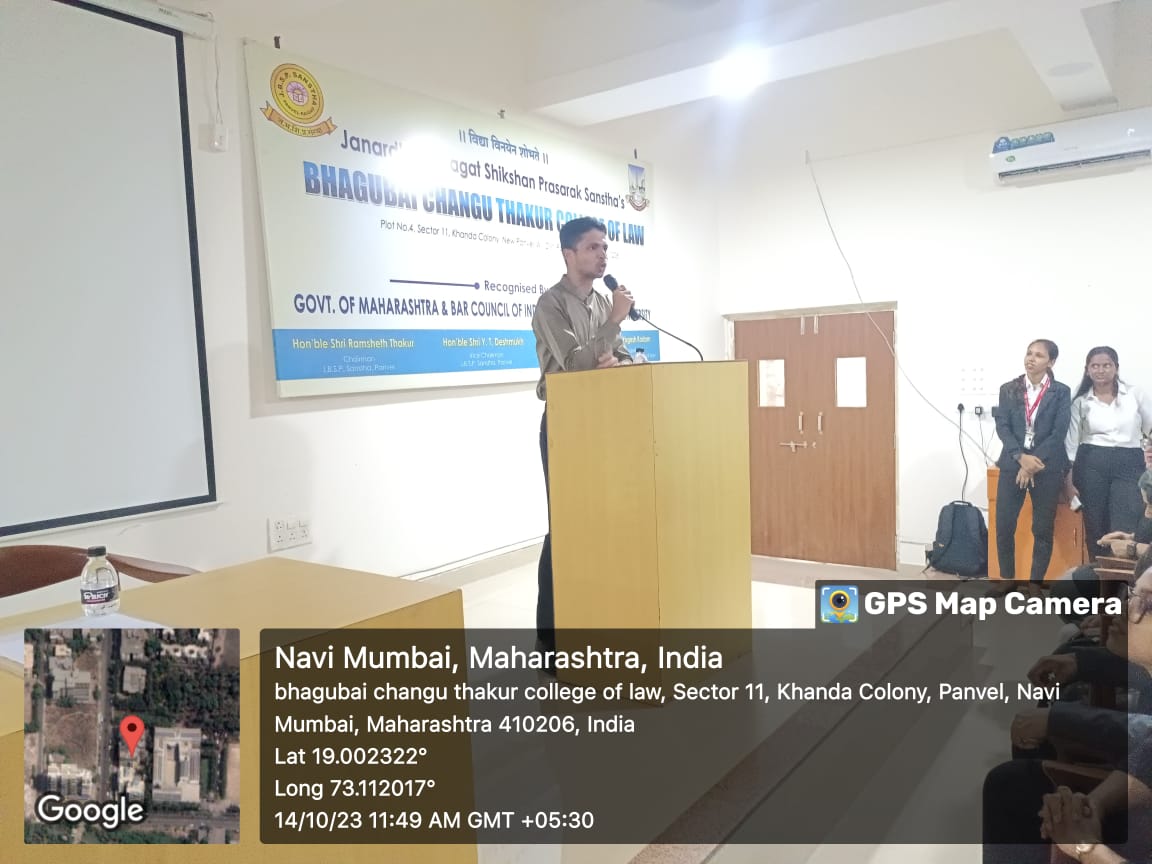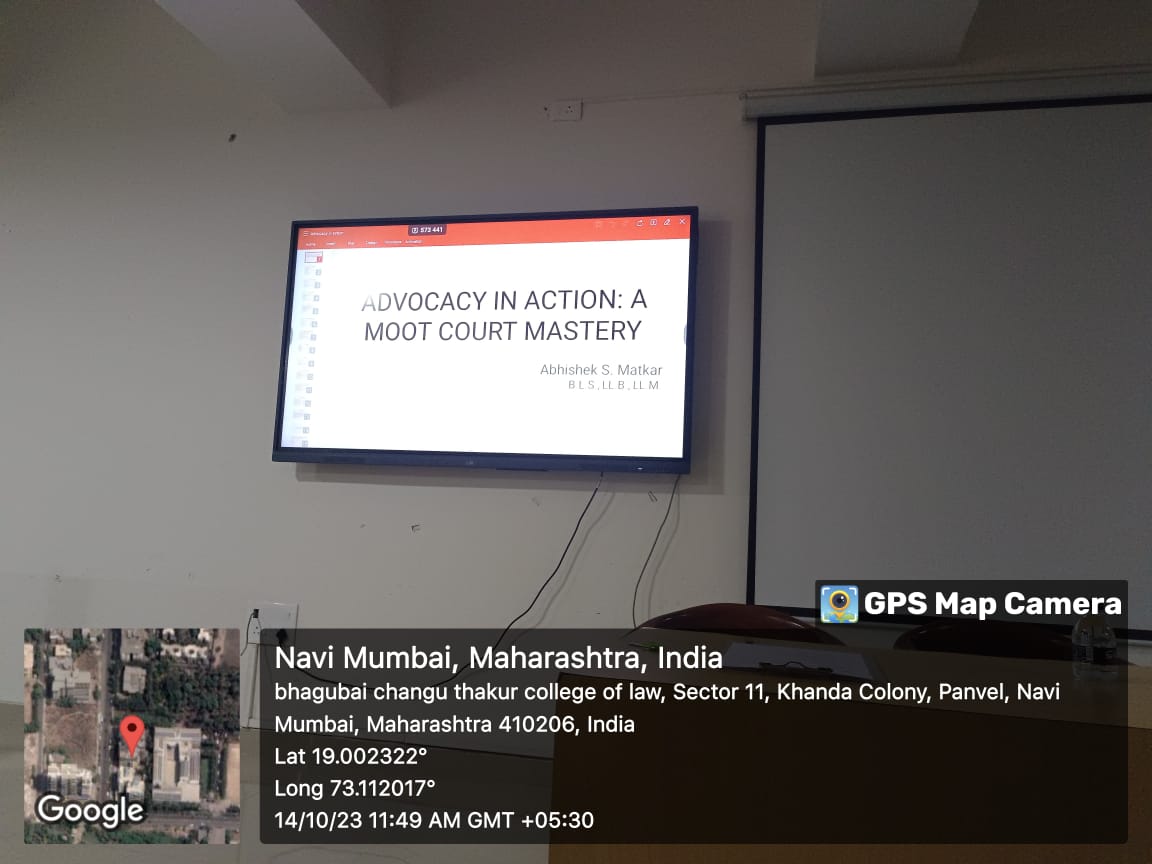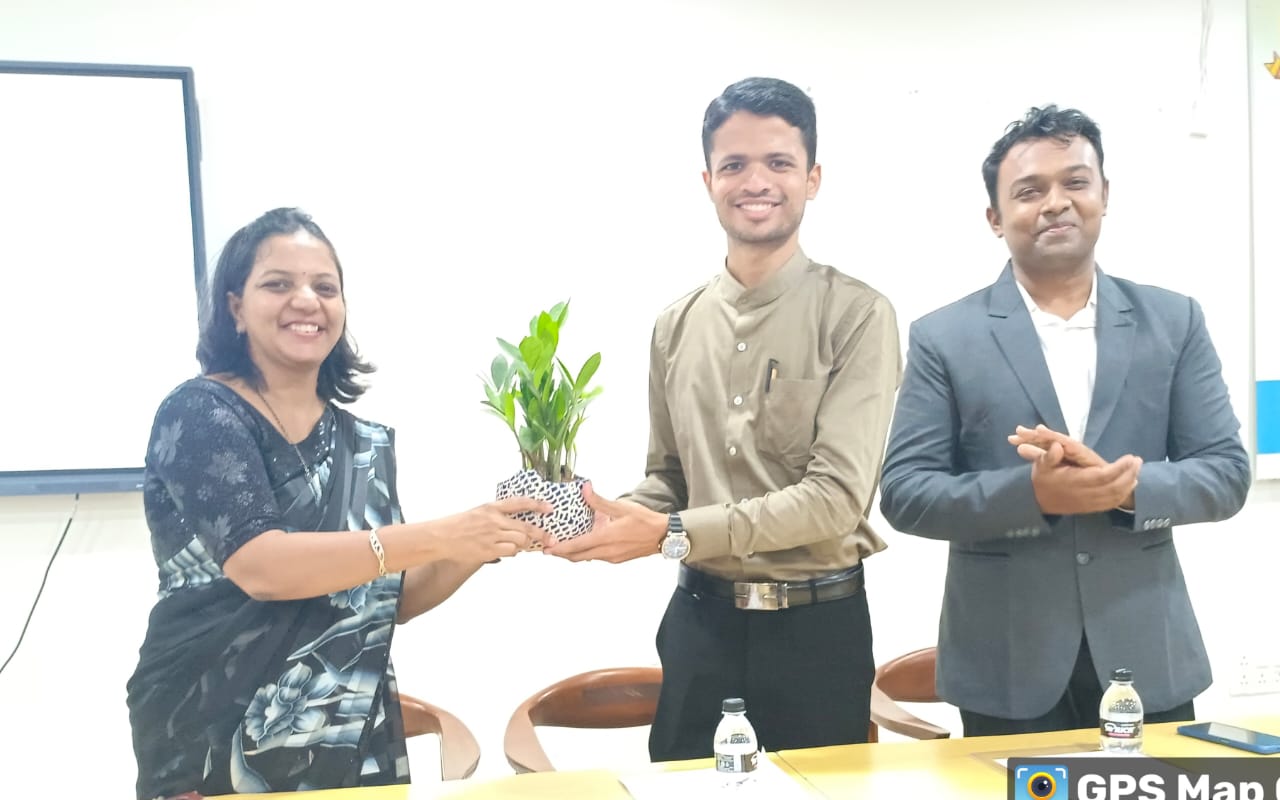
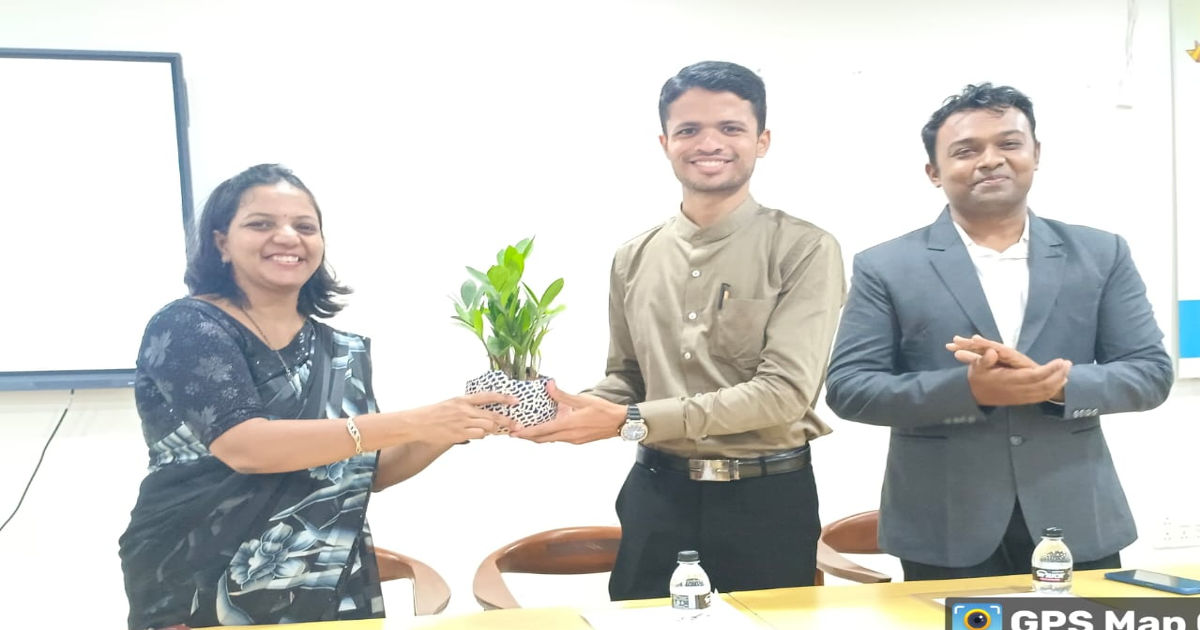
v. Abhishek MatkarCommencement by Ms. Prerana Gaikwad (11:30 AM)
It was a great privilege to have Adv. Abhishek Matkar, with his impressive six years of experience, including extensive involvement in Moot Court, share his invaluable insights and expertise during the seminar on “Advocacy in Action: A Moot Court Mastery.” The event was truly enlightening, and his contributions were highly appreciated.
Adv. Matkar Sir’s captivating session highlighted the essence of litigation, emphasizing that it is akin to an addiction, offering a level of job satisfaction that is unmatched. He elucidated the importance of building a strong foundation in the legal field, touching on key aspects such as:
Terminology Precision: Adv. Matkar Sir’s underscored the significance of mastering legal terminology, highlighting distinctions like “plaintiff and defendant” for civil suits, “complainant and opposite party” for private complaints under Section 156 of the Cr.P.C., and similar differentiations in consumer complaints and family court matters.
Art of Drafting: He discussed the critical art of drafting, emphasizing the necessity to challenge the constitutional validity of laws when relevant, citing the case of Shreya Singhal v. Union of India as an example. Adv. Matkar Sir’s also noted the importance of a clear demand in notices related to the Negotiable Instrument Act Section 138 cases.
Legal Correspondence: He stressed that even at the notice stage, legal correspondence should be concise and maintain a chronological order. He also highlighted the potential complexity of cases involving multiple legal provisions.
Structure of Pleading: Adv. Matkar Sir’s explained the components of a legal pleading, including the need to focus on material facts rather than legal propositions. He discussed the concept of cause of action, the degree of proof, and key considerations when preparing pleadings.
Key Points in Pleading Preparation: Proper instructions from clients, the inclusion of documentary evidence, clear synopses, and detailed jurisdiction, limitations, and causes of action were highlighted as essential factors in successful pleading.
Adv. Matkar Sir’s also covered topics like conveyancing, the essentials of good drafting, and the drafting of wills. He emphasized the significance of ensuring that tenanted properties cannot be bequeathed in a will.
In the context of Moot Courts, he shared insights into the commonalities and distinctions between courtroom advocacy and moot court advocacy. Some of the steps common to both include thorough research, careful reading of bare acts and judgments, and the preparation of well-structured memorials. However, Adv. Matkar Sir’s pointed out that differences exist, such as incomplete facts in moot court scenarios and the absence of emotional or impatient clients.
He also provided practical tips for moot court success, including the importance of interpreting facts accurately, carrying one’s bare acts, preparing notes and an index for easy reference, maintaining a confident demeanor and appropriate body language, and adhering to page limits for memorials.
